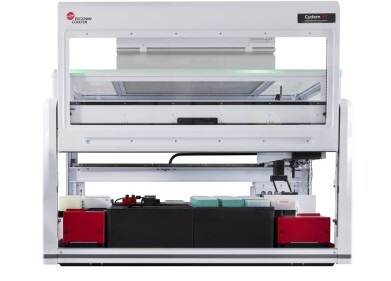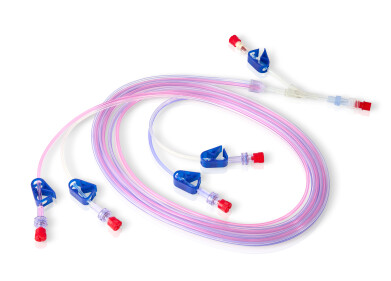Laboratory products
A Beginner's Guide to Health and Safety Laboratory Procedures
Apr 11 2021
Robust health and safety procedures are critical in any industry and laboratories are no exception. From biosafety to diagnostics, there are important rules and regulations all employees must follow to keep both themselves and others safe.
To promote health and safety in the workplace, we’ve put together a guide to best-practice laboratory procedures covering behaviour, safety information, hygiene and more.
Behaviour
-
Employees should avoid skin and eye contact with all chemicals, regardless of how safe they’re considered. Gloves should almost always be worn, especially when handling substances with known toxicity. Even exposure to the smallest amounts of substances such as Acetonitrile, Chloroform, Dimethyl Sulfoxide and Formaldehyde can be highly dangerous or in a worst case scenario, deadly.
-
Unlike other workplaces, laboratories should always enforce a zero tolerance policy for horseplay. The stakes are much higher when chemicals and other substances are involved, leaving no room for rough-and-tumble behaviour, regardless of how “harmless” it’s considered.
-
Employees will often encounter chemicals of unknown toxicity. Even if they look harmless, they should always be considered highly toxic to avoid accidental injury. Similarly, any unknown chemicals produced in a laboratory should be considered hazardous and handled with care.
-
While it can be tempting to snack while working, under no circumstances should food be consumed in a laboratory setting. Employees should always be directed to a safe space where they can eat and drink away from chemical substances. Under no circumstances should equipment, laboratory coats or gloves be worn in a room where food and drink is being consumed.
-
Due to the highly toxic nature of many chemicals, you should never sniff a container to determine a substance. Instead, rely exclusively on labels. For example, smelling the cyanide-containing liquid called Tabun can cause nerve agents to inhibit the enzyme acetylcholinesterase which can result in an overload of a neurotransmitter called acetylcholine. Mild symptoms can include crying, drooling, sweating, vomiting and diarrhea. In serious cases Tabun can compromise respiratory function and lead to death.
-
Chemicals and waste products should never be poured down the drain. Instead, all laboratories should have clear and government-approved waste disposal plans that all employees should know about. The importance of this can’t be emphasised enough and the consequences of a waste disposal breach can be severe. For example, the 2007 foot-and-mouth disease outbreak in Surrey can be linked back to a damaged drainage pipe connected to a Containment Level 4 laboratory where liquid waste was chemically sterilised using an Effluent Decontamination System (EDS), then flushed down the drain. The laboratory decontamination showers were also directly connected to the local wastewater system.
-
Using the mouth to kickstart a siphon can be quick and easy, but for obvious health and safety reasons it’s absolutely discouraged in laboratory settings.
-
Long hair, dangling jewellery and loose clothing should always be pulled back and secured in place. This is to protect the wearer as well as avoid any damage to equipment.
-
Contact lenses should never be worn when handling toxic chemicals, even if safety glasses are worn. This is because corrosive liquids can force the eyelids to clamp shut and make it extremely difficult to remove the contact lens before the eye is damaged. It’s always safest to wear safety glasses over prescription glasses. Ideally, staff with eyesight issues should invest in prescription safety glasses.
-
Enclosed shoes should be worn at all times. Ideally, shoes should be waterproof and made from durable material. Staff should also be briefed on the importance of wearing non-synthetic fibres when handling flammable liquids.
-
All laboratory equipment should be inspected and tested regularly. It’s best to adhere closely to manufacturer requirements and keep records of any maintenance or repairs that have been carried out. As well as minimising the risk of accidents due to malfunctioning equipment, regular inspections also improve the accuracy and reliability of results.
-
A clear reporting process should be used to document accidents, injuries and the release of potentially hazardous materials. Reports should be filed regardless of how small the incident as the consequences may not materialise for several days.
-
Working with lasers? To prevent injury, it’s important to follow key safety rules. This includes always wearing appropriate safety goggles that protect the eyes from both direct contact and scattered light reflected by optical tables, mirrors and mountings. Laser beams should never be aimed higher than chest level and should always be contained using beam stops.
Safety information
-
All employees should know the locations of laboratory safety showers and eye wash stations. Memorising the locations of these stations allows you to act swiftly when exposed to harmful chemicals and substances. Employees should also be briefed on the locations of emergency first aid kits.
-
In addition to safety showers and eye wash stations, you should also know the location of your nearest fire extinguisher. This is particularly important for laboratories that deal with flammable substances.
-
All employees should have a good understanding of where to find emergency exit routes in case of evacuation. Remember, your vision could be impaired by smoke or other substances so it’s important to know how to find exits before an emergency unfolds.
-
Warning signs should be displayed where hazardous materials or equipment are present. If there is a particularly dangerous substance in the laboratory all staff should be briefed on its existence and location. This includes laboratory areas containing biohazards, carcinogens, lasers and radioisotopes.
-
All containers should be clearly labelled to avoid confusion. As a general rule, all labels should contain the chemical identify, a signal word such as “danger” or “warning” to indicate toxicity, first aid information and any relevant hazard statements.
-
All employees should have on-the-spot knowledge of basic laboratory safety signs and symbols, as well as chemical elements and common warning signals used on labels.
Hygiene
-
COVID-19 has redefined best-practice laboratory hygiene and underscored the importance of regular handwashing. All laboratories should be equipped with handwashing stations with access to soap and hot water, as well as hand sanitiser.
-
Coats and other equipment should always be stored in the laboratory or in a designated room. These items should never be stored in personal offices, break rooms or cars as this heightens the risk of contamination and exposure to pathogens and toxic substances.
-
Labels should always be used to indicate whether gloves should be worm when using computers and laboratory instruments. Inconsistency can encourage cross-contamination and jeopardise the safety of employees.
-
As well as hand hygiene, the COVID-19 pandemic has also highlighted the importance of good airflow and filtration. As enclosed spaces where researchers are often working in close proximity to each other, laboratories are considered high-risk areas. Not just for COVID-19 but for other viruses, bacteria and allergens. Installing air purification stations is an effective way to improve health and safety laboratory procedures. High-efficiency filters actively trap unwanted matter and help improve air quality in poorly ventilated spaces such as laboratories.
Understand laboratory-specific safety rules
-
Every laboratory is unique and should have its own safety protocols and procedures in place. These should be determined by manager and team leaders after carrying out assessments. This can include limiting access to high-security areas such as storerooms and high-risk laboratories and developing special handling guidelines for highly toxic substances.
-
As well as general best practice, laboratory safety is often governed by local regulations. Protocols in London-based laboratories may be different from those in Manchester or Birmingham. Companies, universities and research organisations also develop their own rules and it’s important for all employees to have a good understanding of these.
Invest in state-of-the-art equipment
-
Best-practice health and safety isn’t just about behaviour, safety information, hygiene and laboratory-specific rules. State-of-the-art equipment plays a key role in keeping laboratory employees safe at work.
-
Centrifuges are a good example of how advanced equipment can heighten the health and safety credentials of a laboratory. The latest line from Thermo Fisher Scientific features ClickSeal Biocontainment Lids for enhanced safety and security in the lab. Bigneat is another pioneer of laboratory safety, with its latest specialised range of Laboratory Automation Enclosures promising incredible visibility without compromising on safety.
-
When working with hazardous biological material it’s critical to have access to Bio Safety Cabinets (BSCs). They do a fantastic job of decontaminating medical devices and instruments, but it’s also important to carry out decontamination processes inside BSCs. To find out more about when it may be fundamental to decontaminate a BSC, as well as the most common procedures and substances used to carry out the process, don’t miss ‘Decontamination Methods for Bio Safety Cabinets’ featuring insight from VÍctor Lázaro on behalf of Azbil Telstar Technologies S.L.U.
Digital Edition
Lab Asia 31.6 Dec 2024
December 2024
Chromatography Articles - Sustainable chromatography: Embracing software for greener methods Mass Spectrometry & Spectroscopy Articles - Solving industry challenges for phosphorus containi...
View all digital editions
Events
Jan 22 2025 Tokyo, Japan
Jan 22 2025 Birmingham, UK
Jan 25 2025 San Diego, CA, USA
Jan 27 2025 Dubai, UAE
Jan 29 2025 Tokyo, Japan



















